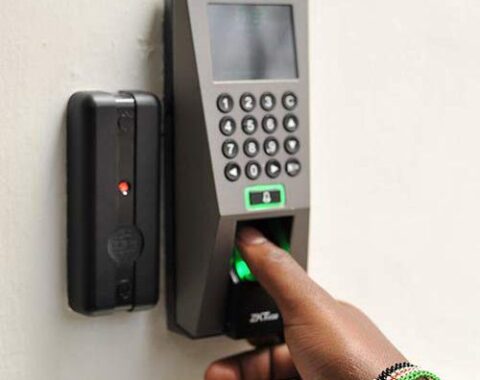Access control systems are designed to regulate who can enter or exit a particular area, as well as monitor and restrict access to sensitive information or locations. They typically consist of several key components that work together to ensure security and manage access.
They basically determine ‘who’ is allowed to enter or exit , ‘where’ they are allowed to enter or exit and ‘when’ they are allowed to enter or exit.
There are different essential components under access control systems that work together to facilitate the productivity of the system. The components include:
1. Biometric Registers.
Biometric registers are specialized databases or systems that store biometric data used for identity verification and authentication. These registers collect and securely store unique biological or behavioral characteristics of individuals (such as fingerprints, facial features, iris patterns, voice, or hand geometry), which are later used to identify or verify a person’s identity.
Biometric access control systems use biometric registers to allow or deny access based on the comparison of a person’s biometric data with the stored templates in the system.
2. Smart cards.
Smart cards are physical cards embedded with microchips or RFID (Radio Frequency Identification) technology that can store data and enable secure authentication for access control systems.
smart cards are used to grant or deny access to secure areas by allowing authorized users to present their cards to a reader, which then communicates with the system to verify the user’s identity.
3. Pin & Passwords.
PINs (Personal Identification Numbers) and passwords are traditional authentication methods used in access control systems to verify the identity of users. A PIN is a numeric code that is used to authenticate a user. Typically, it consists of a series of digits (often 4 to 6 digits) and is kept confidential by the user.
Both PINs and passwords are widely used authentication methods in access control systems. PINs are simple, numeric codes often used for physical access control (like door entry systems), while passwords are more complex and commonly used for system access or digital login processes. While these methods provide basic security, they are generally more effective when used in combination with other security features, such as smart cards, biometrics, or multi-factor authentication systems.
4. Access control panel.
An access control panel (also known as an access control unit or controller) is the central component of an access control system. It serves as the brain of the system, managing and controlling the various components of the access control infrastructure, such as card readers, locks, keypads, biometric devices, and sensors. The panel is responsible for processing access requests, verifying authentication data, and making access decisions (granting or denying entry) based on predefined rules and permissions.


